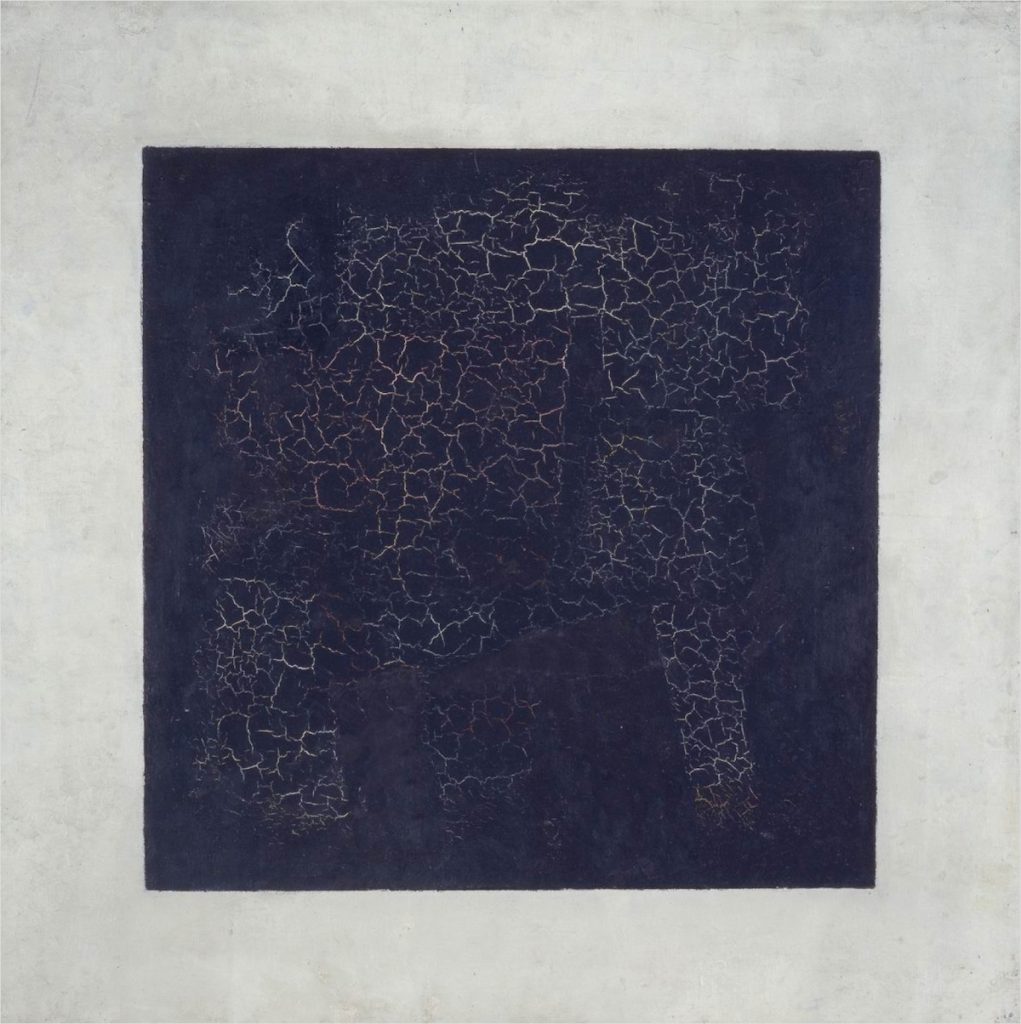
Speaking of black squares and racism, I was surprised to not see anyone try to sneak Malevich’s Black Square into their #BlackoutTuesday posts. But then, I was offline and only did catch up to it all after the fact. Which is good, because it probably would’ve been me; I’m a sucker for a monochrome.
It did make me wonder whether Malevich has been canceled since 2015, when the State Tretyakov Museum announced they found a caption-like text on the face of the painting that reads, “Battle of the Negroes…” The gist of their announcement, and reporting at the time, was that Malevich had at some point–it was written in pencil on dry paint–titled his most important work after a French poet’s 18-year-old monochrome April Fools’ Day joke. Thus the foundational work of abstraction, Suprematism, and Modernism was actually racist satire, joke’s on the century of art snobs who fell for it.

Maybe we were all a little bit too trusting of the Russians in 2015, argued Aleksandra Shatskikh in e-flux journal 2017. Shatskikh, a leading expert on Suprematism, dismissed the Tretyakov’s definitive attribution of the text to Malevich, who would never tell such a lame joke:
[Tretyakov Malevich expert Irina] Vakar drew her information about the creation and existence of the work A Battle of Negroes in a Cave at Night from the internet, most probably from Wikipedia…When they declared the inscription on The Black Square to be “authorial,” neither Vakar nor the collective as a whole felt even a shadow of doubt that Malevich could have thought of his Black Square as a banal illustration and written a title explaining its subject in the white margin below the black “illustration.” This was precisely the approach taken by Paul Bilhaud [in 1882] and then Alphonse Allais: an “illustration” and its humorous title. Allais replicated Paul Bilhaud’s discovery, and the jokers at the Moscow Academy of Painting, Sculpture, and Architecture replicated the replication—permit me to note in passing that witticisms are only authentic when fresh; afterwards they become plagiarism and cliché.
[e-flux journal #85]
Ouch. Shatskikh also criticized the museum’s analysis. Based on the amount of time needed for the paint substrate to dry, and the multiple (ignored) instances of Malevich’s controversial Suprematist works being vandalized, Shatskikh is sure the painting was scribbled on by an unoriginal realist with a terrible sense of humor.
An earlier conversation between Khadija von Zinnenburg Carroll and Dina Gusejnova in Third Text just tries to deal with the fact that this iconic, non-representational painting has this allusive, racially problematic text on it:
[DG:] The fundamental issue, to me, is that someone like Allais could get away with making what he thought of as a little joke, about Negroes in a cave being black, because his audience consisted essentially of white Europeans like himself. But our expectations of more ‘serious’ modernists are higher, and their own imagined audience was larger. We demand them to be emancipators, to work on progress in thinking. After all, it is only another decade or so until the demands of Du Bois for a ‘Negro art’, when he called for culture to help humanity to transcend what he called the ‘color line’, but also, to gain ‘the right of black folk to love and enjoy’ art, if necessary, through propaganda.[13] Like Du Bois, we expect Malevich to be both serious and on the right side of history.
This is why the discovery threatens to undermine the supposed sanctity of modernism itself. And yet, it is perhaps also an opportunity to develop a more critical understanding of many modernists’ own posturing in history.
[third text/decolonising colour]
Allais (or Bilhaud, or Malevich) is not less racist because he also made other monochrome jokes about pale girls in the snow or whatever. As Gusejnova points out, his world was basically European, white, and male. And it doesn’t really matter who wrote the text on Black Square; it successfully punctures the Suprematist myth that abstraction could exist apart from the real world of objects, people, ideologies, and racial conflict. 2015 was as good as year as any for everyone to get that message.
- The Gray Market: Why the Art World Needs Actionable Plans, Not #BlackoutTuesday, to Fix Racial Injustice (and Other Insights) [artnet]
- Inscribed Vandalism: The Black Square at One Hundred [e-flux]
- Malevich’s Black Square under X-ray: A dialogue on race, revolution and art history [thirdtext.org]
- Album primo-avrilesque, by Alphonse Allais [wikipedia]
- Spectacular: the Bibliotheque Nationale de France put big ol’ stamps on every monochrome in their copy of Allais [bnf.fr]
